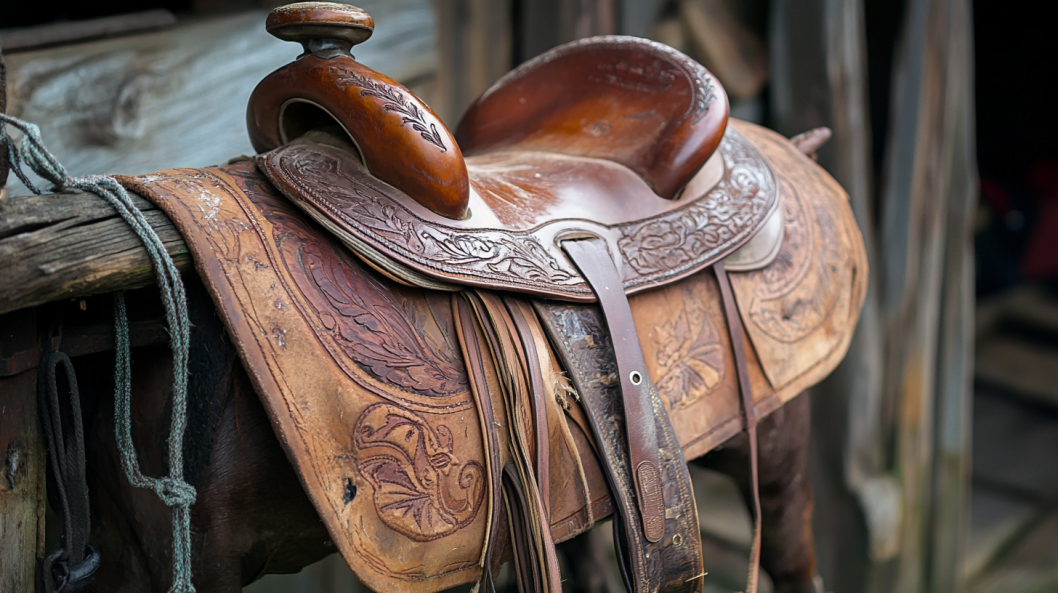A well-fitted saddle is crucial for your horse’s comfort and riding effectiveness. Over time, even the best saddles can show signs of wear and tear, potentially impacting their effectiveness and safety. Knowing when to replace your saddle is essential for maintaining optimal performance and comfort.
A saddle that’s not in top condition can affect your horse’s performance and hinder your riding experience. From my perspective, maintaining or replacing a saddle isn’t merely about aesthetics or comfort—it’s about your horse’s overall health and performance. The decision to replace a saddle should be based on careful observation and a deep understanding of the equipment and your horse’s needs. Here’s a guide to help you determine if your horse saddle needs replacing.
1. Assess the Saddle’s Fit
- On the Horse: A saddle that once fits perfectly might no longer do so as your horse’s body changes. Look for gaps or tight spots between the saddle and your horse’s back. An ill-fitting saddle can cause discomfort and even physical harm to your horse.
- On the Rider: Ensure the saddle suits your body type and riding style. If you’re experiencing discomfort or finding it hard to maintain your position, it may be time to reevaluate your saddle.
2. Inspect the Saddle Tree
The saddle tree is the backbone of your saddle, providing structure and support. Over time, it can become weakened or damaged.
- Check for Cracks or Splits: Look for visible cracks or splits in the saddle tree, which can compromise its integrity.
- Assess Flexibility: A tree that has become overly flexible or bent may no longer provide proper support.
3. Examine the Leather and Materials
The quality of materials can affect the saddle’s durability and performance.
- Check for Wear and Tear: Look for signs of fraying, thinning, or cracking in the leather. Worn-out leather can lose strength and flexibility, affecting the saddle’s fit and function.
- Inspect Stitching: Ensure all stitching is intact. Loose or broken stitching can lead to further damage.
4. Evaluate the Padding and Panels
The padding and panels help distribute pressure evenly across your horse’s back.
- Check Padding Condition: If the padding has become compressed, lumpy, or uneven, it might not provide adequate comfort and support.
- Inspect Panels: Ensure the panels are not damaged or uneven. Panels that have shifted or become uneven can create pressure points.
5. Look for Signs of Discomfort
If your horse displays signs of discomfort or behavioral changes, it could indicate a problem with the saddle.
- Signs of Discomfort: Look for signs such as bucking, rearing, or reluctance to move forward. These behaviors can indicate saddle issues.
- Physical Changes: Check for signs such as sores, pressure marks, or changes in muscle development.
6. Consider the Saddle’s Age
The age of your saddle can be a factor in its overall condition.
- Age and Use: Saddles used extensively for years may naturally wear out. Even with proper care, materials can degrade over time.
- Maintenance Records: Review any maintenance or repair records. Saddles that have undergone multiple repairs may be nearing the end of their useful life.
7. Seek Professional Advice
When in doubt, consult a saddle fitter or a professional. They can provide a detailed assessment of your saddle’s condition and fit.
- Saddle Fitter: A professional saddle fitter can evaluate the saddle and horse to ensure the best fit and functionality.
- Professional Repairer: A professional repairer can advise on whether repair or replacement is better for issues related to the saddle’s structure or materials.
In my view, promptly addressing saddle issues is more than just a matter of comfort—it’s about safeguarding your horse’s well-being and enhancing your riding experience. A well-maintained saddle can make a world of difference. At the same time, a worn-out one can undermine performance and safety. Regularly assessing your saddle’s condition and knowing when to replace it ensures you and your horse can enjoy your rides without compromise.





